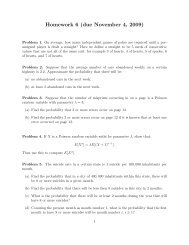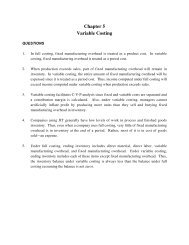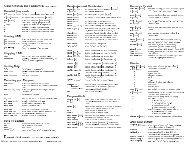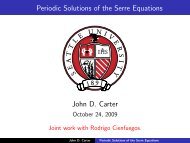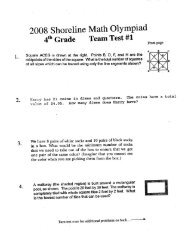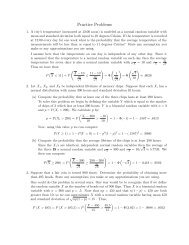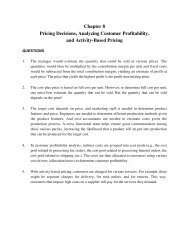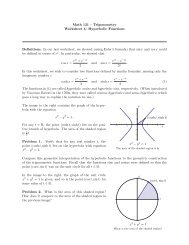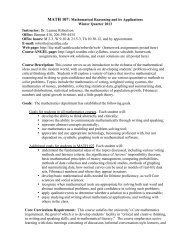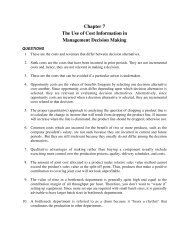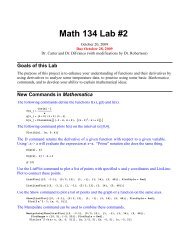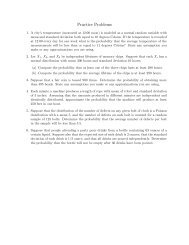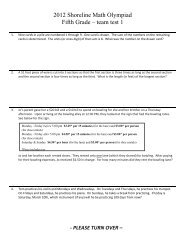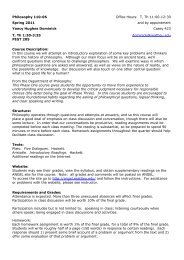Practice Problems Exam 2 Solutions
Practice Problems Exam 2 Solutions
Practice Problems Exam 2 Solutions
Create successful ePaper yourself
Turn your PDF publications into a flip-book with our unique Google optimized e-Paper software.
8. True or False: Decide if each of the following statements are true or false, and discuss briefly why.(a) If limn→∞ a n = 0, then∞∑a n converges.n=1This is false, this statement is only true in the special case of alternating series with decreasing terms. A∞∑ 1counter example to this statement is that the harmonic series has terms that go to zero, but the sumnn=1does not converge.∞∑(b) If a power series c n (x − 2) n converges at x = 5 but diverges at x = 7 then it must convergen=0at x = 1.This is true, the implication is that the radius of convergence is at least 3 but no more than 5, this impliesthat the series must converge for |x − 2| < 3, must diverge for |x − 2| > 5 and without more information wedon’t know what happens for 3 < |x − 2| < 5. The value x = 1 though is in the first case, and thus the seriesmust converge here.(c) If the partial sum s 5 =k=1bounded above by the integral5∑∞1(−2) k is used to approximate s = ∑ 1(−2) k then the error |s − s 5| is∫ ∞51(−2) x dx.This is false, the statement that is given is the bound that is used for functions that converge via the integraltest. The conditions needed to apply this bound are that the terms are positive, the function is decreasingafter some point, and that the corresponding function is continuous. The first requirement, that the termsare positive, is not satisfied here so we can’t apply this bound. There is a bound though in this case and itwould be given by b n+1 = b 6 = 1 2 6 , by the error bound for alternating series.k=19




